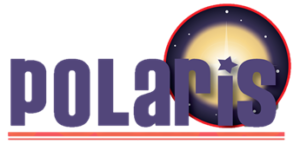Trucking can be a dangerous industry. A lot can go wrong on the open road – from bad weather to inattentive drivers. Nevertheless, some fleets manage to keep their losses down. If you are one of those fleets, consider obtaining your insurance through ARU trucking group captives.
What Is a Trucking Group Captive?
In the conventional insurance market, fleet operators purchase auto liability, cargo, & physical damage insurance and other coverage types from trucking insurance carriers. In exchange for a premium, the carrier handles claims and covers losses. The carrier may also earn an underwriting profit and investment income. If the fleet has lower-than-expected claims, the insurance carrier keeps the profit.
In the captive model, the trucking company owns a captive to insure it. This allows the trucking company to retain ownership of the premiums and investment income and to take control of claims handling and losses. If losses are lower than expected, the trucking company will receive dividends from the underwriting profit.
The ARU group captive model is a game changer for middle-market truckers. Whereas large corporations have enjoyed the benefits of single-parent captives for decades, smaller companies have often been unable to take advantage of this option. With ARU group captives, this is no longer the case. Now, midsize companies can join forces to reap the benefits of the captive structure.
Why Consider an ARU Truck Group Captive?
High insurance costs are an ongoing problem for trucking companies. They add to the overall cost of doing business and make it more difficult to earn a profit.
Fleet operators with high losses typically see higher insurance prices and more difficulty obtaining coverage. Unfortunately, even fleet operators with low losses often experience insurance price hikes and reduced coverage during hard markets.
Insurance underwriters rely on many factors when determining rates, some of which are outside the policyholder’s control. For example, insurance underwriters often rely on class pricing. This means your rates may also go up if other fleets have high losses. Economic factors and litigation trends may also influence your rates, even if you haven’t had claims. As a result, fleets that succeed in keeping their losses down are highly profitable for insurers.
In the captive structure, fleets can reap the rewards of good risk management. Instead of earning a profit for insurance carriers, they retain ownership of their premiums and earn dividends for keeping losses down. The captive model also gives fleet operators greater control over their coverage.
A group captive gives midsize companies a way to increase market leverage. Members can also participate in buying groups for other coverages. Individually, midsize companies often lack the resources necessary to implement the insurance strategies larger corporations use. With the group captive model, though, midsize companies can work together to gain advantages.
The group captive also benefits members by developing custom loss control services, claims handling, and financial reports. If your company already takes risk management seriously, these services will help you take your risk management to the next level to reduce your losses further.
How Does a Trucking Group Captive Work?
ARU offers two group captive options designed specifically for trucking companies:


ARU group captives minimize volatility and cap losses. Insurance companies with an A.M. Best rating of A+ (superior) or better front the programs. Policies in the Polaris group captive are issued by Old Republic Insurance Company of Canada, whereas policies in the PowerTech Elite group captive are issued by Great West Casualty Company.
Who Can Join an ARU Trucking Group Captive?
If your trucking company is in good financial condition and has good risk management, it may be a fit for our trucking group captives.
Before being accepted, you will need to submit a loss history for your fleet showing all losses for the current year and five years prior.
In addition to the requirements above, there are some restrictions. The PowerTech Elite group captive is unavailable to non-commercial fleets, some limited restrictions based upon type of operations may apply.
When Is a Good Time to Join a Group Captive?
Interest in the captive model has been growing for a couple of reasons. For one thing, additional captive models (such as the ARU proprietary group captive structure) have made the captive structure viable for midsize companies. For another, more companies are looking for alternative solutions as insurance prices increase.
The conventional insurance market goes through cycles of hard and soft markets. During soft markets, companies generally have access to affordable insurance with the coverage terms they need to manage their risks. During hard markets, insurance prices rise, making it challenging to find suitable coverage.
These hard insurance markets may push frustrated company leaders to explore captive insurance options. However, captive insurance is much more than an attractive solution during hard markets: it is a long-term strategy that frees companies from the insurance frustrations caused by market cycles and class-based ratings.
If you’re thinking about pursuing the captive structure, ask yourself the following questions:
If your fleet meets all the eligibility requirements, there’s no reason to put off joining an ARU captive. The conventional insurance market will always have its ups and downs; captive insurance is your way to stabilize premiums and enjoy greater control over insurance services and costs. If you’re interested in joining one of our trucking group captives, contact ARU.
